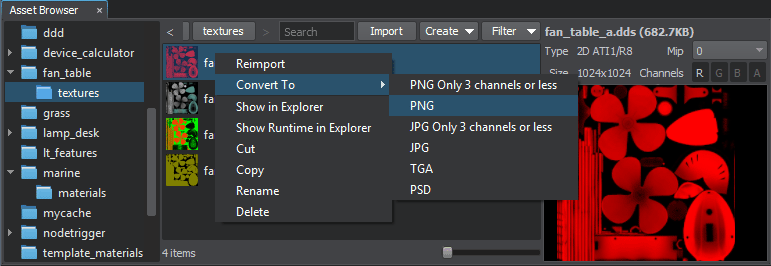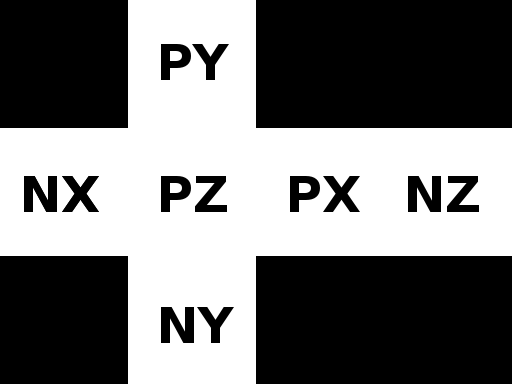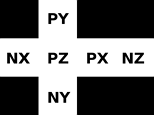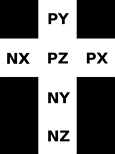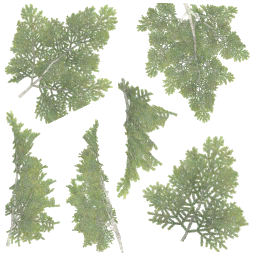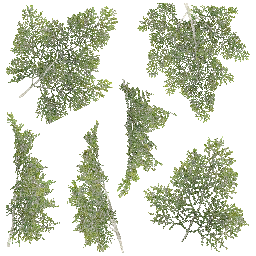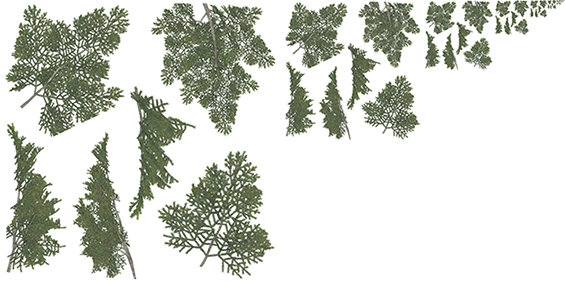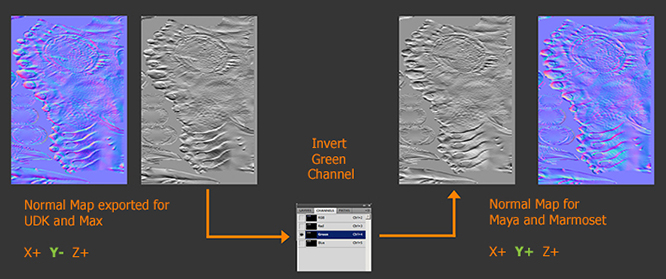Texture Import Guide
You can import textures in convenient formats (such as .tga, .jpg, .png, .hdr, etc.). As you import a texture via the Asset Browser, using drag and drop or the Import button, the following import settings are displayed. These settings can also be changed later via the Parameters window.

Common Parameters#
| Unchanged |
Defines whether the texture is to be used "as is" or a runtime will be created for it in accordance with the specified import options. Notice
When this option is enabled, the texture is used by the Engine and added to the final build "as is". E.g., you can use this option for your custom HDR texture. |
||||||
|---|---|---|---|---|---|---|---|
| Texture Preset |
This preset determines what sort of texture is to be generated, it defines compression algorithms and color channels to be used. The list of available presets includes the following:
|
||||||
| Image Type |
Type of the texture to be generated. Available options are:
|
||||||
| Image Format |
Defines the image pixel format: bit depth and channels used. Compressed formats are supported. The default format is RGB8. The drop-down menu contains all possible formats. However, if an unsuitable format is selected for the texture, the image would not be imported properly. For example, the normal texture accepts ATI2 files only. For more details on formats, see the description of the texture asset format. |
||||||
| Mipmap Type |
Type of filtering to be used for mipmap generation. Available options are:
|
||||||
| Mipmaps SRGB Correction | Enables sRGB gamma correction for mipmaps. |
Resolution Parameters#
| Width |
Texture width (a power of 2).
|
|---|---|
| Height |
Texture height (a power of 2).
|
Other Parameters#
Texture Postfixes#
Texture postfix is important, as it defines compression algorithms and color channels to be used. Postfixes correspond to certain texture presets. The list of available postfixes includes the following ones:
- texture_alb for albedo textures (RGB — color, A — opacity). Other possible postfixes are: _al, _albedo, _albedomap, _albedo_map, _albedotexture, _albedo_texture, _col, _color, _colormap, _color_map, _colortexture, _color_texture.
- texture_d for diffuse textures (RGB — color, A — opacity). Other possible postfixes are: _d, _dif, _diff, _diffuse, _diffusemap, _diffuse_map, _diffusetexture, _diffuse_texture.
- texture_n for normal textures (RG — surface normal components). Other possible postfixes are: _nrm, _norm, _nrml, _normal, _normalmap, _normal_map, _normaltexture, _normal_texture.
- texture_nrgb for normal textures that store opacity in the B channel (RG — normals, B — opacity.
- texture_s for specular textures (RGB — specular, A — gloss). Other possible postfixes are: _sp,_ spec, _specular, _specularmap, _specular_map, _speculartexture, _specular_texture.
- texture_sh for shading textures (R — metalness, G — roughness, B — specular, A — microfiber).
- texture_a for ambient occlusion textures (R — AO map). Other possible postfixes are: _ao, _oc, _aomap, _ao_map, _aotexture, _ao_texture, _ambient, _occlusion, _aocclusion, _occlusionmap, _occlusion_map, _occlusiontexture, _occlusion_texture, _ambientocclusion, _ambient_occlusion.
- texture_h for parallax height maps (parallax effect) (R — height map). Other possible postfixes are: _p, _pa, _par, _parallax, _parallaxmap, _parallax_map, _parallaxtexture, _parallax_texture, _height, _heightmap, _height_map, _heighttexture, _height_texture, _dis, _disp, _displacement, _displacementmap, _displacement_map, _displacementtexture, _displacement_texture.
- texture_l for light maps (RGB — light color).
- texture_e for emission textures (RGB — glow color). Other possible postfixes are: _em, _emis, _emission, _emmap, _em_map, _emtexture, _em_texture, _emissionmap, _emission_map, _emissiontexture, _emission_texture.
- texture_m for image mask textures.
- texture_c for cubemap textures used as the world environment or environment probe.
- texture_vp for 3D lighting textures used for voxel probes.
- texture_v for 3D textures used for volumetric effects or color variations.
- texture_ies for IES light profile textures.
You can define default import options for a texture by simply adding a postfix to its name.
Assigning Imported Texture#
To assign the imported texture to a material, you can choose one of the following ways:
-
Drag the icon of the texture asset from the Asset Browser window to the destination field in the Parameters window.
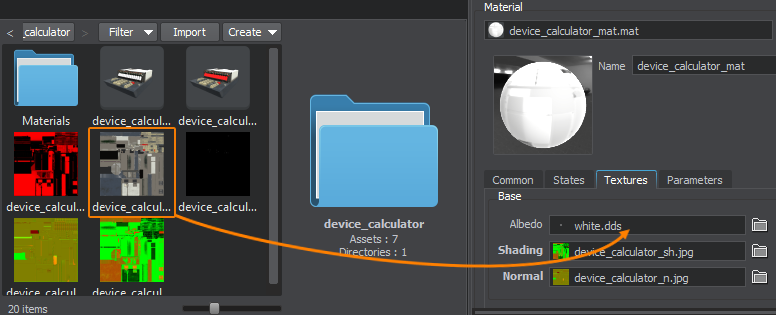
-
Use the button next to the destination field in the Parameters window to select the desired asset.

- Type the name of the asset to the destination field in the Parameters window manually. If an asset with the specified name exists in the project it will be shown while you type.
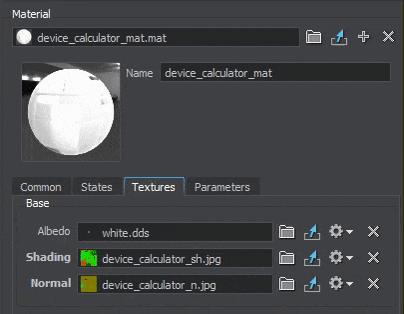
Texture Conversion#
Texture Conversion is a feature that allows optimizing a texture at a later stage of the project without changing the asset GUID, thus preserving all necessary links. Any texture asset used in your project can be converted to one of the available formats.
To convert a texture, right-click the texture in the Asset Browser to open the context menu, and select Convert To and the required file format. The file immediately will be converted to a selected format.
